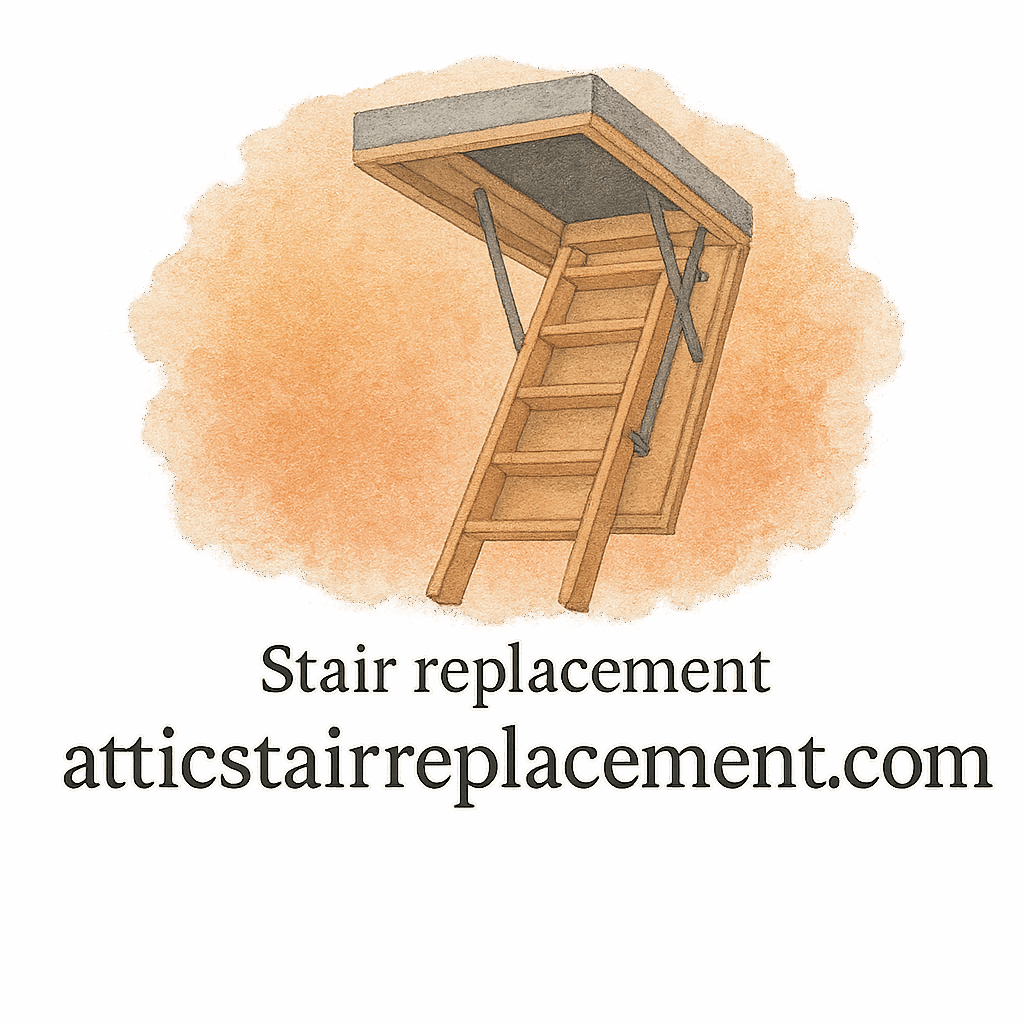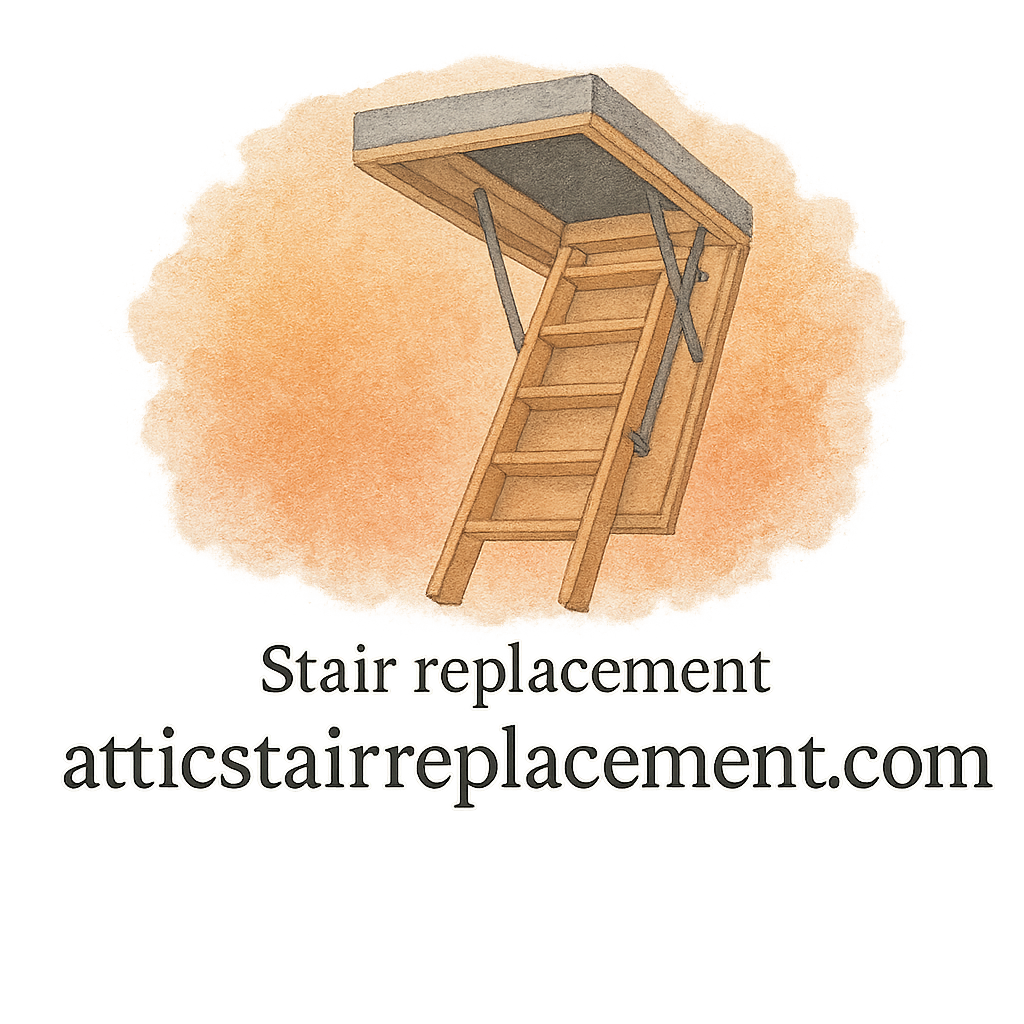Introduction
So, you’ve finally decided to tackle that DIY attic stair replacement project, huh? Good on you! Whether you’re upgrading a rickety old ladder or just sprucing things up for your next home project, it’s essential to prioritize safety from start to finish. This isn’t a job where you want to wing it. A single misstep could lead to more than just a crooked ladder—it could lead to injury or serious home damage.
In this article, we’ll cover 6 safety tips for DIY attic stair replacement that could save your skin (literally), keep your house intact, and help you complete the job like a seasoned pro. And yes, we’ll link to some helpful expert advice along the way to make sure you’re covered from attic to basement.
Let’s get into it.
1. Choose the Right Ladder for the Job
Understand Weight Ratings and Usage
First thing’s first: not all attic stairs are created equal. Before you grab the first ladder at your local hardware store, check the weight rating. A ladder rated for 250 lbs might be okay for light use, but if you’re carrying boxes or using tools regularly, you might want to go for a heavy-duty option.
Look for labels like Type I (250 lbs) or Type IA (300 lbs) if you’re serious about durability. These ratings aren’t just numbers—they’re your first line of defense against a collapsed staircase.
Check out our post on durability tips to learn more.
Material Matters: Wood vs. Aluminum
Both materials have their pros and cons. Wooden attic ladders often offer a more aesthetic and traditional look, but they can warp over time and may not handle humidity well. Aluminum, on the other hand, is lightweight and rust-resistant—perfect for long-term use.
Make sure whatever you choose matches your home’s climate and your usage needs. You’ll find helpful insights in our product reviews section.
Consider Foldability and Accessibility
Think about how often you’ll be using your attic. For regular access, go with a ladder that folds smoothly and tucks away neatly. Poor foldability not only becomes a frustration but also a potential hazard.
You can also dive into some DIY installation guides that showcase the best foldable options available.
2. Prepare the Area Properly
Clear the Surrounding Space
Before you even crack open that ladder box, make sure the area around the attic entrance is clean and clutter-free. That means moving furniture, rugs, and other obstacles that could trip you up during the install.
This simple step often gets skipped, but trust me—when you’re carrying a bulky attic stair frame, you’ll be glad for the extra wiggle room.
Turn Off Power in the Work Zone
If your attic entrance is anywhere near a ceiling light or fan, shut off the breaker. Electrical safety is no joke. One wrong move with a drill, and you’re not just risking a zap—you could start a fire.
This is a topic we cover in more detail under home improvement safety protocols.
Protect Your Flooring and Furniture
Ladders, screws, power tools—they’re all enemies of your hardwood floors and living room decor. Use drop cloths or moving blankets to cushion your surroundings. Your spouse (and your wallet) will thank you later.
For more on this, our maintenance and repair section goes over floor protection in depth.
3. Use the Proper Tools and Safety Gear
Basic Tools You’ll Need
Here’s a shortlist of essentials:
- Cordless drill
- Screwdriver set
- Level
- Measuring tape
- Utility knife
- Stud finder
These tools can be found in almost any DIY enthusiast’s toolbox.
Essential Personal Protective Equipment
Don’t skimp on safety gear:
- Safety goggles
- Work gloves
- Dust mask (especially if your attic is insulation-heavy)
- Hard hat (if you’re installing in a tight ceiling space)
Trust us, you don’t want a chunk of drywall falling on your head mid-project.

4. Install According to Manufacturer’s Instructions
Why Instructions Matter More Than You Think
Every brand has its quirks, so don’t assume you can install a Werner attic ladder the same way you did your Louisville one. Following the exact instructions ensures you’re not voiding any warranty—or putting yourself at risk.
It’s not just about putting screws in the right holes—it’s about structural integrity. Need guidance? Here’s some expert insight on this exact topic.
Common Installation Mistakes to Avoid
- Skipping the pilot holes
- Failing to anchor to joists
- Cutting the ceiling opening too small or large
- Ignoring alignment during mounting
Check our common mistakes tag to avoid falling into these traps.
5. Never Work Alone
Spotting and Lifting Assistance
Attic stair units are heavy and awkward, especially during ceiling installation. Having a second set of hands can prevent the ladder from falling, bending, or snapping during mounting.
This is especially important when working on a remodel or renovation project with other hazards in the space.
Explore more on team-based attic projects.
Safety in Numbers: Why Two Pairs of Hands Are Better
Even if you’re a seasoned DIYer, having someone nearby can help with:
- Holding the ladder frame steady
- Double-checking alignment
- Reading instructions while you install
Plus, if something goes wrong, they can call for help immediately. Never underestimate the power of a good spotter.
6. Inspect and Test After Installation
Test Weight Capacity Before Full Use
Once installed, don’t immediately load up with boxes and bins. Gradually test the ladder by applying weight in increments—first your own body, then some light cargo, and so on.
Safety checks should be a regular part of your attic usage routine. Our care and maintenance tips offer a handy checklist for this.
Look for Misalignment and Gaps
Before calling it a day, inspect your work. Look for:
- Gaps between ladder frame and ceiling
- Misaligned hinges
- Unstable treads
These might not seem like a big deal today, but over time they can cause serious structural issues. Be proactive, not reactive.
For an in-depth guide on what to check post-install, visit our installation checklist.
Bonus Safety Tips for DIYers
Know When to Call a Pro
There’s no shame in admitting a DIY job is above your pay grade. If you’re dealing with structural beams, complex wiring, or tight crawlspaces, it might be safer (and cheaper in the long run) to hire a contractor.
Read about hiring qualified contractors for attic jobs.
Budgeting for Quality vs. Safety
Sometimes spending a little more upfront can prevent hidden costs down the line. That includes buying a better ladder, using proper hardware, and investing in reliable safety gear.
Learn more about balancing budget and quality in our budget-conscious tips section.
Conclusion
Replacing your attic stairs might seem like a straightforward weekend task, but the devil’s in the details—and the safety. From picking the right ladder to doing thorough post-installation checks, every step matters.
Follow these 6 safety tips for DIY attic stair replacement, and you’ll not only protect yourself but also ensure your home stays safe and sound for years to come.
Whether you’re doing a full home remodel or just upgrading your attic, don’t cut corners. Do it right, do it safe.
FAQs
1. Can I install attic stairs by myself?
Technically, yes—but it’s much safer with a second person. Attic ladders are bulky and often require precise alignment, which is tricky alone.
2. What’s the best type of attic ladder for frequent use?
Go for a heavy-duty aluminum ladder. It’s durable, rust-resistant, and often lighter than wood.
3. How do I know if my attic can support a stair replacement?
Use a stud finder to locate joists and ensure the structure can bear the weight. If unsure, consult with a home improvement expert.
4. What are the most common mistakes DIYers make?
Not securing to joists, misaligning the ladder, and skipping safety gear. Our mistakes guide breaks it down further.
5. How long does it take to install an attic stair?
Typically 3–5 hours for a standard install. Add time if you’re modifying the opening or reinforcing the ceiling.
6. Is attic ladder installation covered by homeowners insurance?
Generally not unless damage occurs due to a covered event. It’s wise to ask your agent beforehand.
7. Where can I find a step-by-step attic ladder guide?
Visit our DIY installation page for full tutorials and video walkthroughs.


